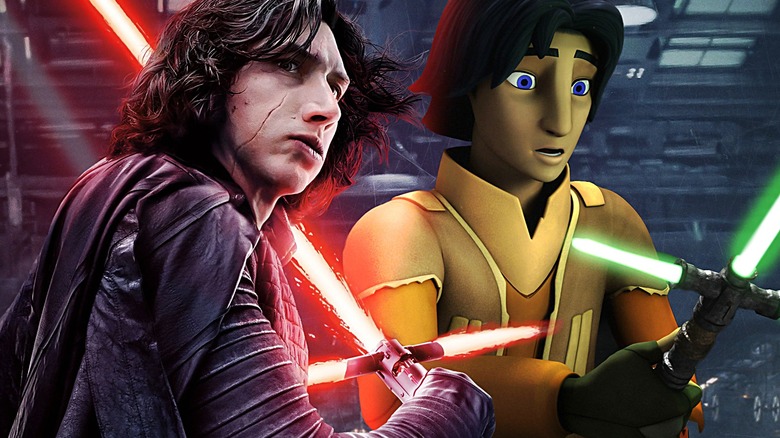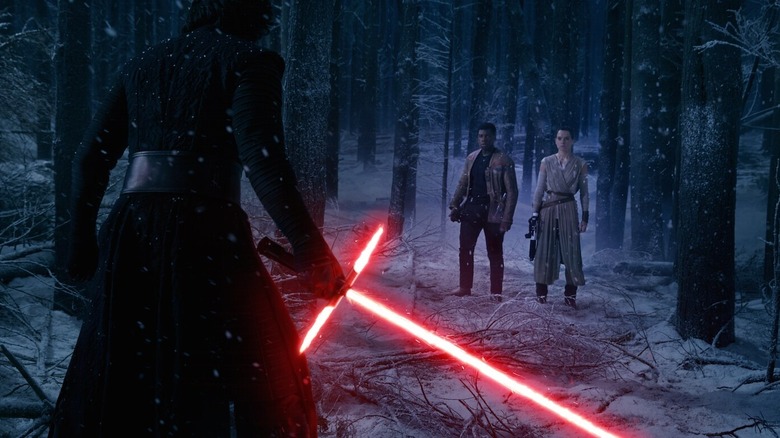Star Wars: Why Crossguard Lightsabers Are Safer Than You Think
When the first trailers for "Star Wars: Episode VII — The Force Awakens" came out, a militant contingent of fans made Kylo Ren's crossguard lightsaber their new most-hated thing. It didn't make sense, they said. It was superfluous, clunky, and unwieldy in combat. Perhaps these same fans were the ones to later criticize the sequel trilogy's lightsaber fights for not being as balletic as those in the prequels. Regardless, the crossguard lightsaber became a fierce point of contention. Even Stephen Colbert weighed in.
Nearly a decade later, the debate seems to have cooled. A crossguard lightsaber popped up in "Star Wars: Rebels," the High Republic era of Star Wars novels and comics have delivered even more examples, and the perpetually angry crowd found other things to be mad about (see: women in Star Wars). No one really talks about Kylo's iconic blade anymore, and that's a shame because the canonical explanation for the crossguard lightsaber is actually quite interesting. It's a design meant to keep the wielder safe, and in Kylo's case, it comes with an extra safety feature.
Kylo's lightsaber uses an unstable kyber crystal as its power source. In order to contain the crystal's raw energy, he found and recreated an old hilt design with vents known as quillons. These expel excess power from the kyber crystal using a complex inner design, thus allowing the blade to be controlled. It retains its unbridled, coursing look, though. Of course, these vents also help protect the user's hands during combat — a feature that you'd think more Jedi and Sith might want to take advantage of. After all, plenty of Star Wars characters have changed their lightsabers before.
How the crossguard lightsaber works
In addition to venting excess energy from an unstable kyber crystal, the crossguard lightsaber is meant to keep the user protected from sneaky blows. It's the same purpose that a real crossguard serves on a real broadsword, preventing an opponent from sliding down the blade and slicing at your hands, as well as stopping you from accidentally cutting yourself during battle.
For as much grief as the design got when it debuted, it arguably makes more sense than the regular, unadorned lightsaber hilt. In "Revenge of the Sith," Anakin Skywalker defeats Count Dooku by doing the exact thing the crossguard is designed to prevent: sliding down his opponent's blade while their sabers are locked, slicing off his hands, and leaving him defenseless. This is the only time in mainline Star Wars that we see someone successfully pull off a move like this, but it doesn't seem hard to do. Like the question of why people don't rapidly turn their lightsabers off and then back on to break locks, this is a detail that's best not to look at too closely.
It still seems odd that the crossguard saber didn't remain in vogue during the Republic's final days. The reason, obviously, is that no one at Lucasfilm had come up with it yet. If we really wanted to find an in-universe explanation, you could argue that the design's more cumbersome nature — evident in both Kylo Ren's fighting style and Cal Kestis' crossguard saber in "Star Wars Jedi: Survivor" — made it unpopular for the fast-paced fighting styles of the prequel era.

